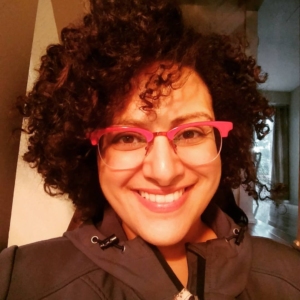Carolyn Ramzy
- Fellowship Dates 2011-2011
- Research Topic Coptic Taratīl and a History of Musical Resistance: Singing Egyptian Nationalism Beginning in the Early 20th Century
- Fellow or Grant Type Bureau of Educational and Cultural Affairs
- Affiliation Pre-doctoral candidate University of Toronto
Carolyn Ramzy is an Associate Professor and ethnomusicologist at Carleton University. She graduated from the Eastman School of Music (Bachelor of Musical Arts & Diploma of Ethnomusicology, 2004), Florida State University (MA Ethnomusicology, 2007), and the University of Toronto (Ph.D. Ethnomusicology, 2014). Dr. Ramzy’s research focuses on Egyptian Christian popular music in Egypt and a quickly growing diaspora community in the U.S. and Canada. Specifically, she examines the gendering of Coptic music culture and the discursive politics of the community’s religious pop songs in the lives of Coptic Orthodox women following the Egyptian uprisings. She has published in Ethnomusicology, Ethnos, and the International Journal of Middle East Studies. Her other interests include: musics of the Middle East, the performative politics of citizenship and belonging in Egypt and in a growing global Coptic diaspora; music and religion; neo-Pentecostal and charismatic worship movements; satellite and digital ministries; virtual ethnography and field research; post/colonial music discourses and scholarship; and critical race and diversity studies.
During the time of Carolyn’s fellowship at the American Research Center in Egypt (2010 – 2011), she explored the devotional songs genre of taratil and taranim, the most influential and popular music performed by Coptic Orthodox Christians in Egypt. Taratil and taranim are religious, non-liturgical folk songs that draw on contemporary Egyptian folk and popular music that emerged during the nationalist movement for Egyptian independence beginning in the 1920s. These songs also borrowed and adapted American and British missionary hymns and became embedded with nationalist sentiments that celebrated Coptic identity in a newly autonomous Egyptian state. Beginning in the 1970s, these songs were further transformed into a popular phenomenon performed by church choirs, youth groups and lay congregation members all throughout the country and abroad. It is also important to note that these songs are predominately performed and taught by Coptic Orthodox women. Now, taratil and taranim are the most widely disseminated though satellite channels, streaming platforms such as YouTube and Anghami, as well as cassette tapes.
This research traced the development of taratil and taranim genre and outlines their growth as inspired and coded with Egyptian nationalism in the early 20th century. With their dependence on Egyptian folk and popular music, these songs have formed an integral part of a larger national Coptic turath, or heritage. They are not only devotional songs of praise but also oral and musical narratives that document Copts’ place in Egypt’s emerging statehood and a growing pride in indigenous culture.
